RIGHT TURN ONLY!!
Alice Games
by Rebecca Silverman,

Last week I discovered that what I had assumed to be a dead leaf in the corner of my window was in fact a dead bat. Somehow it had gotten stuck between the storm window and the screen, and I guess the high winds we had moved it around a little. In any event, it had to go, which was a lot harder than I anticipated. The worst part? The sucker was completely dessicated and I accidentally decapitated it while maneuvering the screen. So then I had to crawl around on my bedroom floor looking for a detached bat head...which of course all six cats thought was a great game. I found it and removed the whole thing, but I can't help thinking of that room as “the bat room” now.
Wow, that was kind of gross, huh? Maybe I should stick to talking about manga.
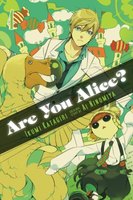 ARE YOU ALICE?
ARE YOU ALICE?Vol. 4
(by Ikumi Katagiri, Yen Press, $11.99)
FROM THE BACK COVER: When the Wimpy Book of Caterpillar Alley's One Hundred Stories loses its plot (literally), Alice finds himself all alone, faced with questions he can't answer. Is the sister in his dreams the real Alice? And did he really commit such an atrocity against her? As Alice tries to puzzle out his own story from the few memories he has, the Hatter and the Caterpillar try to figure out how the tale went to horribly wrong...
REVIEW:
Who is this guy everyone calls Alice, anyway? That question has been floating along through the series since it began, but with each volume becomes a much more pressing question. Now as Alice has somehow managed to derail the book Caterpillar brought him to (a mini-game in the Wonderland world?) only to somehow end up where he needs to be after all, it's starting to look like he maybe really isn't Alice after all. Did he kill the real one? What's the deal with the 88th Alice? These questions are starting to become more important, but we still aren't getting many answers...which may, it seems, lie in the excerpts from Carroll's original text. If you're a fan of Lewis Carroll's book, this is the real highlight of the volume as it offers us images and text and repeated references to “Sensei,” which, we should remember, is also a term used to refer to authors. References to younger siblings, specifically brothers, are also present, which may be somehow linked to the original Alice's close relationship with her younger brother Frederick. Carroll references aside, however, this is a pretty disjointed story, with flashbacks appearing within flashbacks and jumbled conversations being the norm. There are a couple of uses of question marks that don't make a whole lot of sense, and honestly at this point the Cheshire Cat is is getting to be really annoying. The idea that no one is native to Wonderland is definitely intriguing, and the Caterpillar has a neat character design, but the plot is really feeling very cut up at this point. It may be a deliberate nod to the fact that many people consider the original book a confusing story, but at four volumes in, it's time to iron out what's going on.
RECOMMENDATION: Basically I'm going to split this in two:
1) If you are an Alice in Wonderland junky (you know who you are), then buy it. The references to the original novel are fascinating and spotting the one chapter in each volume named after an original novel chapter is fun. It's confusing, but finding all the references and tributes makes it worthwhile.
2) If you're not really into Alice, skip it. The story is basically a mess and all the neat character designs in the world can't hide the fact that it's hard to tell what the hell is going on.
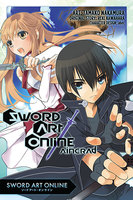 SWORD ART ONLINE
SWORD ART ONLINEVol. 1
(by Reki Kawahara and Tamako Nakamura, Yen Press, $20)
FROM THE BACK COVER:
In the year 2022, gamers rejoice as Sword Art Online - a VRMMORPG (Virtual Reality Massively Multiplayer Online Role Playing Game) like no other - debuts, allowing players to take full advantage of the ultimate in gaming technology: NerveGear, a system that allows users to completely immerse themselves in a wholly realistic gaming experience. But when the game goes live, the elation of the players quickly turns to horror as they discover that, for all its amazing features, SAO is missing one of the most basic functions of any MMORPG - a log-out button. Now trapped in the virtual world of Aincrad, their bodies held captive by NerveGear in the real world, users are issued a chilling ultimatum: conquer all one hundred floors of Aincrad to regain your freedom. But in the warped world of SAO, "Game Over" means certain death - both virtual and real...
REVIEW:
I am about to say something that I very rarely say: the show was better. This manga adaptation of the first arc of Reki Kawahara's Sword Art Online light novels is a rushed mess with little to no character development, awkward artwork, and lots and lots of Asuna crying. While the premise of the story remains intriguing – players trapped in a virtual world with the threat of real-life death should they die in-game – the execution of this manga is so shoddy that it gets to be a chore to read it. Asuna and Kirito never have a believable relationship (in part because their meetings are only shown in flashback after they've hooked up), and the artwork does not show action well: fight scenes are close ups of faces and shouted attacks, with no real sense of movement. In fact, the artwork drags the story down in general. Nakamura has not mastered facial expressions or the basics of human anatomy. To compound matters, anyone who is not a teenager tends to look inhuman – Klein looks like a desiccated alien and Kuradeel like a corpse. Adding insult to injury is the fact that Asuna really does spend an awful lot of time tearing up. Gelatinous tears linger at the corners of her eyes as if they were part of her character design, and her role seems to be mostly “maker of good food;” we rarely see her in battle.
There are some good points to this two volume omnibus. We absolutely get information that was not present in the anime version, some of which enhances the story's world. The villain gets a little bit more development, which definitely helps, and the pace of the story ensures that there is less of Kirito just hanging around with ladies. Unfortunately none of this is enough to make up for the rest of the book – let's hope the actual novel is better.
RECOMMENDATION: Skip it. This is clunky, poorly paced and inexpertly drawn, and generally feels like a chore to get through.
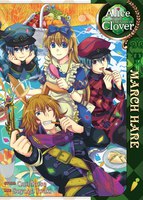 ALICE IN THE COUNTRY OF CLOVER: MARCH HARE
ALICE IN THE COUNTRY OF CLOVER: MARCH HARESingle Volume
(by QuinRose and Soyogo Iwaki, Seven Seas, $13.99)
FROM THE BACK COVER:
TORN BETWEEN TWO BUNNIES! When Alice came to the Country of Clover, she swore she didn't want to fall in love. But Elliot March, the rabbit-eared second-in-command at Hatter Mansion, has other plans. He's enthusiastic, affectionate, and disarmingly honest—but he's also a vicious killer and a mafia thug. And that's not even getting into his scary obsession with carrots…
On the other side, there's the jealous Peter White, the white rabbit who brought Alice to Wonderland in the first place. As Prime Minister of the rival territory of Heart Castle, he's not without his charms. Alice finds herself forced to make a choice once and for all.
REVIEW:
Do you favor Elliot as the man to win Alice's affections but weren't crazy about My Fantatic Rabbit? Then this is the book for you. Fortunately for readers who are just firmly entrenched in QuinRose's Alice in the Country of ______ series, it's also a pretty good read in general. March Hare, which follows the Elliot route from Alice in the Country of Clover, is one of the better books in the franchise for understanding Alice herself. We get a lot more introspective narration as she tries to deal with the fact that falling in love does not necessarily mean an inevitable painful goodbye, with most of the action being inside Alice's own head. Elliot is a sympathetic character this time around, clearly flawed but also somehow endearing, and Blood plays one of his least irritating roles yet. This volume is also interesting for its treatment of Peter White, showing the more bittersweet side to his character that has been hinted at but not fully explored. Series newcomer Soyogo Iwaki's art is also quite pleasant – Alice is rounder than in previous incarnations, and while at times her baby face doesn't work, the solidity of her limbs is a very nice change of pace. That the book is entirely without filler – no random side stories from this or other QuinRose series – is another major plus. With March Hare you get what you pay for: a romance between Alice and Elliot that is much sweeter than some of the others and generally an enjoyable time.
RECOMMENDATION: Buy it. This is, despite its quietness, one of the more enjoyable spin-offs of the franchise. Everything is consensual, characters are sympathetic, and the new artist does a nice job.
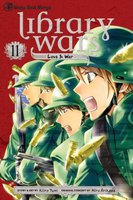 LIBRARY WARS: LOVE AND WAR
LIBRARY WARS: LOVE AND WAR
Vol. 11
(by Kiiro Yumi, Viz, $9.99)
FROM THE BACK COVER:
In the near future, the federal government creates a committee to rid society of books it deems unsuitable. The libraries vow to protect their collections, and with the help of local governments, form a military group to defend themselves--the Library Forces!
Fighting censorship at her hometown art museum, Iku Kasahara and her fellow Library Forces team members are involved in a fierce skirmish in which several ranking officers are severely injured. The damage is far reaching, causing a rift in the Library Forces management that makes Iku question her place in the organization. In the midst of this controversy, Iku's relationship with her direct supervisor, Dojo, grows more intimate when a long-discussed tea-date begins to sound more like a romantic liaison!
REVIEW:
At long last, the Library Forces are actually going to war! Not for long, of course, but the first couple chapters of this volume have Iku and her gang engaged in combat with the MBC soldiers. It's Iku's first real taste of war, and while she outwardly keeps her cool in battle, afterwards she's a believable mess, with flashbacks and nightmares. Because this is Library Wars her emotional fragility is mostly used as a way to throw in some romantic moments with her commanding officer Dojo, but by this point most of us are accustomed to the, shall we say, unrealistic nature of the this particular army. At its heart, Library Wars is still a romance against an army and censorship backdrop, and this volume has Iku acting more like a romantic heroine than she has in the past. She weeps. She hides tucked up in corners. She admits her feelings. While parts of this work, others, like her perpetually tear-filled eyes, drag the book down. Yes, she should be upset by the events of the war. But maybe she doesn't need to be crying in every scene? This aside, Yumi does handle most of the artwork and the storytelling well enough to make up for the deficiencies. This is still an easy to read story with clean art and likeable characters, the kind of series that, while you notice its problems, is still good enough to keep going with. Part of this is Yumi's light touch with the humor, as well as her portrayal of the idealogical issues going on on the story's periphery. If this doesn't quite achieve Ray Bradbury-levels of censorship warning, it does still touch on the issue in an understandable way, even if the idea of armed librarians is still a bit hard to swallow.
RECOMMENDATION: Borrow it from a library or a friend. Library Wars is a nice break in your day, but it has too many fluffy shoujo trappings and credulity-straining moments to be a top-notch title.
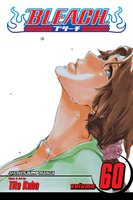 BLEACH
BLEACHVol. 60
(by Tite Kubo, Viz, $9.99)
FROM THE BACK COVER:
Ichigo Kurosaki never asked for the ability to see ghosts—he was born with the gift. When his family is attacked by a Hollow—a malevolent lost soul—Ichigo becomes a Soul Reaper, dedicating his life to protecting the innocent and helping the tortured spirits themselves find peace. Find out why Tite Kubo's Bleach has become an international manga smash-hit!
With the training not going as planned, Ichigo returns to the World of the Living to reevaluate himself. But when he runs into his father, Isshin, he discovers he has a lot to learn about his mother—and the way she died!
REVIEW:
Who knew that there was an actual reason that Ichigo is so ridiculously overpowered? As it turns out, there really is, and it even makes a decent amount of sense. As has consistently been the norm with Tite Kubo's shounen epic, the flashback arc that tells us the full story behind both Ichigo's origins and his mother's death is strong. It also ties in with the earlier elongated flashback about the Visoreds, which is a nice touch. “Everything But the Rain” is simultaneously romantic and sad, and all of that is almost eclipsed by the fact that, at long last, Ichigo's powers make more sense. The first three-quarters of the book are quite strong, both in terms of the story and the art – it's amazing how much Ichigo looks like his (younger) dad, and a young Mrs. Kurosaki looks a lot like an older Yuzu. Unfortunately the final few chapters bring the volume down, with more preparing for a battle that will likely take a while to materialize, and a lot of small plot threads that may or may not prove important. The final pages set us up for some good stuff in volume 61, but the book is uneven in its quality, which is really too bad. Bleach is still fun, but it's kind of a bad sign when you catch yourself wondering when it will end.
RECOMMENDATION: Borrow it from a friend or a library. The book starts strong – and Kubo's not kidding when he tells you to read it in the rain; the atmosphere helps – but it falters at the end.
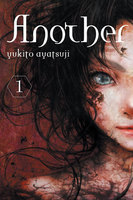 Another
Another
2 volumes
(by Yukito Ayatsuji, Yen Press, $6.64 [kindle])
FROM YEN PRESS:
In the spring of 1998, Kouichi Sakakibara transfers to Yomiyama North Middle School. In class, he develops a sense of unease as he notices that the people around him act like they're walking on eggshells, and students and teachers alike seem frightened. As a chain of horrific deaths begin to unfold around him, he comes to discover that he has been placed in the cursed Class 3 in which the student body head count is always one more than expected. Class 3 is haunted by a vengeful spirit responsible for gruesome deaths in an effort to satisfy its spite. To stop the vicious cycle gripping his new school, Kouichi decides to get to the bottom of the curse, but is he prepared for the horror that lies ahead…?
REVIEW:
The source material for both the anime and manga of the same name, Yukito Ayatsuji's Another novels are creepy, atmospheric, and ever-so-slightly easier to figure out than their spin-offs. Told in first person from Koichi's point of view, the book expands on his experiences and gives us a greater understanding of both he and Mei as characters than either the anime or manga do. Descriptions are more detailed, and even if you have experienced the story in a different form, there are plenty of new pieces of information to be found. Several characters come to different ends as well, with a few very important things that make for a better mystery existing in these original works. In some ways, the novels of Another are more mystery than horror, although it must be admitted that the line between the two genres is pretty thin. Sadly the ball jointed dolls don't really have any more to do with the story than in other incarnations, seeming to exist to make Mei creepier than she already is. The translation is a little stilted as many novel translations are, owing to differences in phrasing and word order between Japanese and English, but these books still read smoothly and quickly...just maybe not right before bed.
RECOMMENDATION: Buy it. Look, I don't even like reading books on an e-reader (or the Kindle ap on my computer), but I couldn't put these down. Even – or maybe especially – if you've already read the manga or seen the anime, these are worth it.
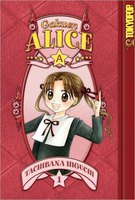 GAKUEN ALICE
GAKUEN ALICE16 of 31 volumes released
(by Tachibana Higuchi, TokyoPop)
FROM THE ENCYCLOPEDIA:
In a small country school, Sakura Mikan and Imai Hotaru are classmates and best friends - in their own way. Ditzy, emotional Mikan seems ill-matched with aloof, emotionless Hotaru, yet they are together all the time... until Hotaru gets called away to study at the strange and forbidding Alice Academy. In her anguish at being left behind, Mikan finally decides to follow her friend - and doing so, she makes a strange discovery.
THOUGHTS:
Of all of the unfinished series left behind by TokyoPop, I think I miss Gakuen Alice the most. The story of the irrepressible Mikan, whose heart of gold offsets her lack of brilliance, and the way that she changes the world around her without even realizing it is not only charming and heartwarming, but also often funny and bittersweet. There's a little bit of Pippi Longstocking in her, and that quality attracts others to her in ways that none of them quite understand. Of course, her amazing powers, or rather, her Alices, help us to see the darker side of the story, and when TokyoPop left off publishing the series, we were really starting to understand what was at stake for all of those with Alices, particularly Natsume, whose own life is endangered by his talent. Very little is what it seems in the story, and the young ages of the protagonists does not stop Tachibana from exploring the grimmer implications of the way the children are exploited. There's also a really cute love triangle going on between Mikan, Natsume, and Luca, and Mikan and Hotaru's friendship is strong, even if Hotaru doesn't always show it. Please, someone rescue this series!
And that's all for this time! Stop by the forums and share your opinions – or those of your pets, because one of my cats really enjoyed watching me read March Hare for some reason.
discuss this in the forum (14 posts) |